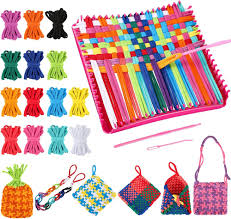The Loom: A Key Innovation in Textile Production

Introduction
The loom, a transformative device in the realm of textiles, has played a vital role in the evolution of fabric production worldwide. Its significance in the textile industry cannot be overstated, as it paved the way for mass production of fabrics, revolutionising the fashion and textile landscape. Emerging from ancient innovations, modern adaptations of the loom continue to shape the industry.
The Historical Evolution of Looms
Dating back to ancient civilisations, looms were first invented somewhere around 5000 BC. Early looms were simple devices made from wood, using a manual process to weave threads together. Over centuries, looms evolved significantly; the introduction of the horizontal loom allowed for improved efficiency. The Industrial Revolution in the 18th century marked a pivotal moment with the invention of powered looms, which enhanced production capacity and volume, that ultimately led to a boom in the textile industry.
Modern Loom Technology
Today, looms exist in various forms, including handlooms, Jacquard looms, and automatic weaving machines, each tailored for specific fabric types and applications. The Jacquard loom, famously invented by Joseph Marie Jacquard in 1804, revolutionised the production of patterned textiles by utilising punch cards to control the weaving process automatically. With the advent of technology, Computerised Automatic Looms (CALs) allow for designs to be programmed directly into the machine, further enhancing productivity and creative possibilities.
Impact on the Fashion Industry
The relevance of looms extends into the modern fashion manufacturing landscape, where the ability to produce intricate designs quickly meets the fast-paced demands of today’s consumers. Moreover, the rise of eco-friendly fashion has also returned interest to traditional weaving techniques, with many designers employing handloom practices to create sustainable, artisanal fabrics. Initiatives supporting local artisans have also surfaced, promoting heritage textiles made on handlooms, thereby fostering cultural preservation while appealing to conscious consumers.
Conclusion
The loom, though a fundamental tool with ancient origins, continues to be a cornerstone of the textile industry. As technology advances, the balance of innovation and traditional craftsmanship will shape the future of fabric production. For consumers, understanding the journey of textiles from loom to garment can lead to more informed and meaningful choices in fashion. With sustainability at the forefront of future production processes, looms may play a crucial role in redefining the fabric of our society.








